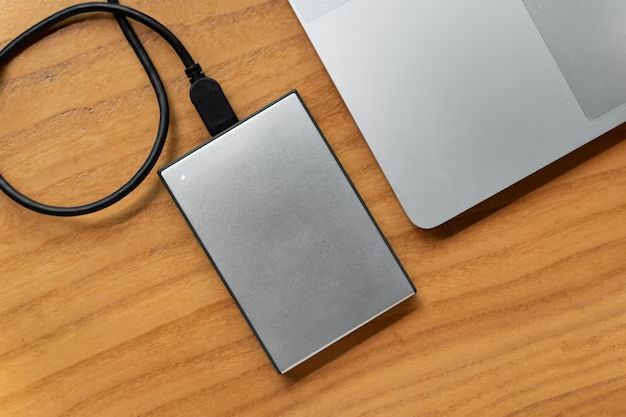With the prevalence of high resolution photos and videos, many photographers and hobbyists find themselves needing expanded photo storage options. External hard drives provide a versatile way to archive images and free up space on primary devices. But with different interfaces, form factors and features to consider, determining the right external drive for your photo storage needs takes some research.
How Much Storage Capacity Do You Need?
The first question to consider is how much storage capacity you require. RAW photo files and especially videos can quickly eat up storage space. As a baseline, here are some storage space guidelines for photos and video:
- RAW photos: 25-35 MB per file
- JPG photos: 5-15 MB per file
- 1080P videos: ~1 GB per minute
- 4K videos: ~4 GB per minute
So assess how many photos and videos you need to store and budget for adequate capacity. Also factor in expected growth over the next 1-2 years. A minimum capacity of 1TB is recommended for most consumers, but photographers and videographers may need 2TB or higher.
Hard Disk Drive (HDD) vs Solid State Drive (SSD)
The next key consideration is whether to choose an external HDD (hard disk drive) or SSD (solid state drive). HDDs have traditionally been more affordable with higher capacities, while SSDs cost more but provide big performance advantages:
| External HDD | External SSD | |
|---|---|---|
| Cost | Lower – ~$50-$100 per TB | Higher – ~$100-$200+ per TB |
| Capacities | Up to 10TB+ | Typically up to 2TB |
| Interface Speed | Up to 150MB/s | Up to 550MB/s |
| File Transfer Speed | 100-130MB/s | 400-550MB/s |
| Ruggedness/Durability | Can fail with physical shocks | No moving parts, more durable |
As the table shows, SSDs have big advantages in speed and durability over HDDs. But HDDs can offer 4-5X higher capacities for less cost. If speed is most important or you only need 1-2TB capacity, an external SSD is likely the best option.
USB, Thunderbolt or USB-C Interface?
The data transfer interface is another key factor for performance. There are three main options for external drives:
- USB 3.0/3.1 – Very compatible and delivers decent speeds up to 5 Gbps (theoretically 625 MB/s but ~100-130MB/s real world speeds). Nearly all computers have USB ports.
- Thunderbolt 3 – Offers exceptional speeds up to 40 Gbps (theoretically 5,000 MB/s, over 2,500 MB/s real world). But fewer PCs offer Thunderbolt ports.
- USB-C – Supports USB 3.1 speeds up to 10 Gbps (theoretically 1,250 MB/s) and Thunderbolt 3 if the PC has Thunderbolt support. USB-C ports are becoming more common.
If you transfer photos frequently, Thunderbolt 3 provides a big speed boost. But USB 3.0/3.1 offers a good balance of speed and compatibility for many users’ needs.
Drive Form Factors
In addition to capacity and interface, the physical size and form of the external drive matters too. Key options include:
- Portable hard drives – Compact and lightweight so you can carry them anywhere. Range from slim 2.5″ drives to larger 3.5″ form factors.
- Desktop hard drives – Designed to stay in one place and require a power adapter. Offer larger 3.5″ drives and higher capacities.
- Rugged drives – Durable shockproof and weather resistant casing. Great for travel and outdoor use.
- DIY external drives – Buy an internal hard drive and enclosure separately to create your own external drive. Offers more flexibility.
Consider where and how you’ll use the drive to decide which form factor best suits your needs. Portable and rugged drives offer more flexibility for travel and on-the-go use.
Other Handy Features
Some other features that are nice bonus capabilities in external photo drives include:
- Hardware encryption – Keeps data secure if the drive is lost or stolen
- Integrated SD card reader – Quickly transfer photos without cables or adapters
- USB hub/dock – Allows connecting multiple accessories with only one USB port
- RAID support – Stores data redundantly across drives for protection
- Backup software – Helps automate copying files from PC to drive
These capabilities provide extra convenience and flexibility but aren’t always essential. Consider what features would be most useful for your specific needs and workflow.
Our Top External Drive Picks
With all these factors in mind, here are some top recommended options in different categories:
Overall Best Portable External SSD
Samsung T7 Portable SSD – With exceptional speeds over 1,000 MB/s, compact size, rugged metal casing and USB 3.2 interface, the Samsung T7 is the best overall portable SSD. It strikes a great balance of performance, reliability and value. Available in 1TB and 2TB capacities.
Best Budget External HDD
Seagate Basic Portable HDD – For large photo collections, the Seagate Basic HDD provides huge 4TB capacity for under $100. Speeds are decent at 140MB/s and it has a sleek, slim form factor for portability.
Top Thunderbolt 3 Drive for Max Speed
LaCie 2big Dock Thunderbolt 3 RAID – For pros who demand cutting edge speeds, this 8TB RAID drive delivers over 2500MB/s throughput via Thunderbolt 3. It also has a handy integrated SD card slot and USB hub.
Most Durable Rugged Portable Drive
G-Technology ArmorATD – This rugged HDD/SSD drive meets military drop test standards and IP54 dust/water resistance. Ideal for travel and outdoor shoots with its durable silicone protective case.
Conclusion
Choosing the ideal external drive for storing photos depends heavily on your storage needs, budget and intended use. Compact and fast portable SSDs offer great versatility for typical consumers and pros. For maximum capacities, HDDs remain a cost-effective solution. And look for rugged drives if working in harsh environments. Thunderbolt 3 provides incredible transfer speeds but isn’t yet universally compatible. And finally, consider bonus features like encryption, software and USB hubs for added functionality.
